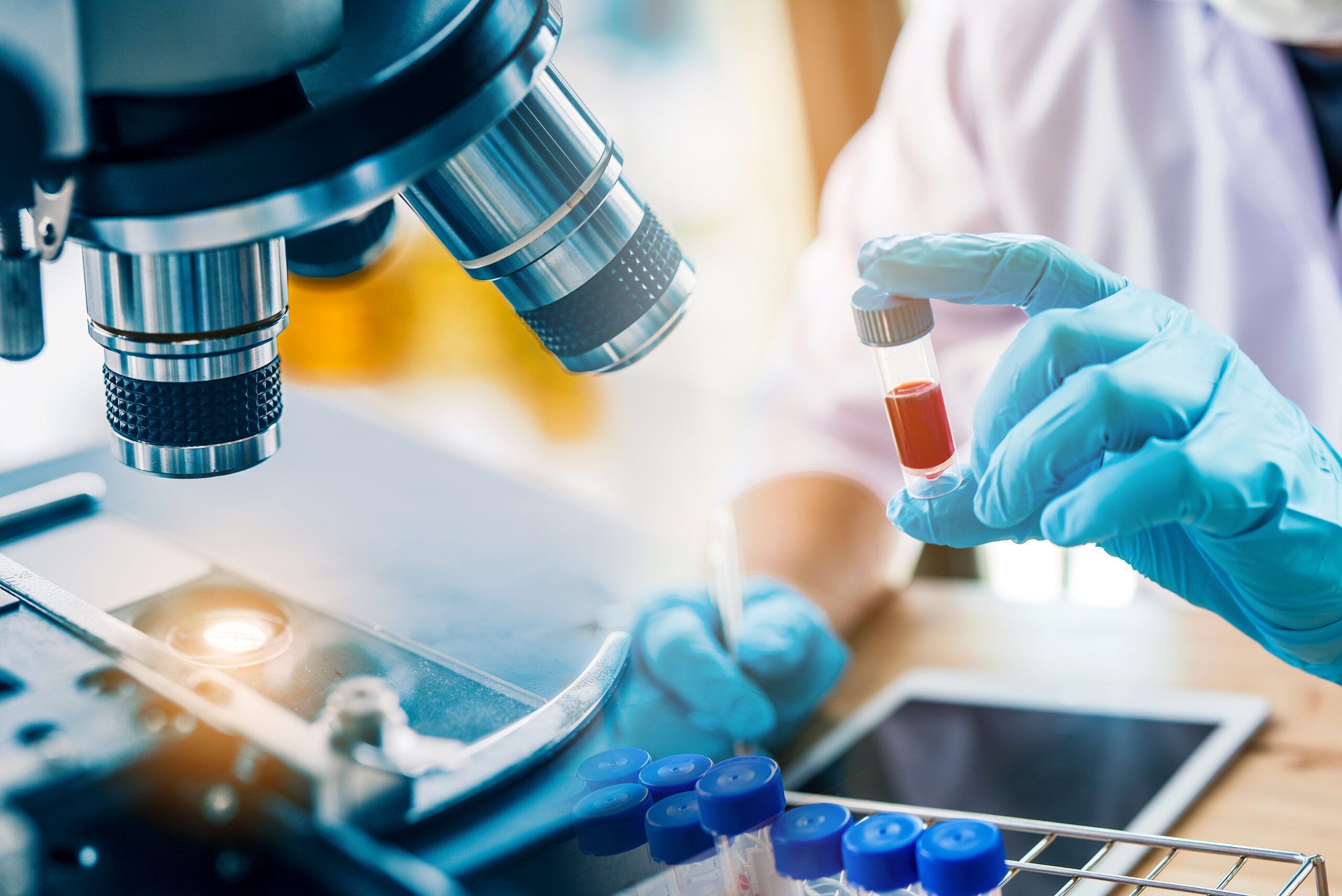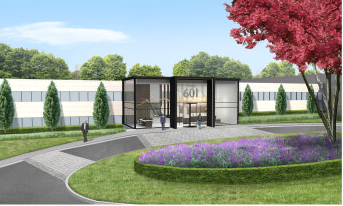- Home
- History
Since 1964, New York Blood Center (NYBC) has been a pillar of innovation. Born from the critical need to address blood shortages in New York City, NYBC has evolved into NYBCe, one of the nation’s largest nonprofit blood centers. As a global leader in transfusion medicine, biomedical research, and healthcare solutions, we now operate in 17+ states, serving 75 million people and delivering one million lifesaving blood products annually.
Pioneering Medical Advances

Our innovations have reshaped the fields of blood collection, processing, and transfusion, leading to improved patient outcomes through pioneering rare blood registries, barcoding systems, groundbreaking immunogenetics research, and vital HIV/AIDS treatments. We also discovered groundbreaking cord blood stem cell therapies.
This timeline celebrates our extraordinary achievements in saving lives, advancing science, and fostering community health globally. Explore our journey.

New York Blood Center’s legacy dates back to the early 1950’s when it operated as Inter-County Blood Banks.

New York Blood Center opened its doors as a nonprofit entity to ensure a safe and reliable blood supply for New York City as well as conduct invaluable scientific research to advance blood transfusion medicine. Prior to this time, New York City had a continual shortage of blood for transfusions and no central oversight of collection and distribution. Much of the blood supply was purchased from paid donors, resulting in major safety concerns.

Following a landmark New York Academy of Medicine study, the Community Blood Council of Greater NY (CBCGNY), later NYBC, was established with Dr. Aaron Kellner as its first President. Early research included Dr. Fred Allen’s work on redefining blood groups and human genetics.

Research underway included Dr. Aaron Kellner studying the relation of fat in the blood to heart disease and Dr. Fred Allen studying blood groups and human genetics.

First “rare blood” registry was established for the New York metropolitan area.

First centrally administered Blood Donor Program established for municipal employees (now contributing nearly 40,000 donations annually to support our community).

American Medical Association (AMA) Today’s Health reported on NYBC’s progress in cryobiology in “Super- Cold: The ‘Hottest’ Thing in Science.”

Greater NY Blood Program combined the services and facilities with Community Blood Council and the American Red Cross and later became NYBC.

NYBC became the first blood center in the US to become licensed to fractionate transfusable products from plasma.

Renovation of 310 East 67th Street headquarters completed through support of the Capital Fund Campaign Committee chaired by then President of NY Telephone, William Ellinghaus.

NYBC/Community Blood Council organized a 1-3 year Post-Doctoral Clinical and Research Training Program for Blood Bank Directors in recognition of an acute shortage of qualified professionals.

New York-New Jersey Regional Transplant Program provided 24-hour services to every transplant hospital in the New York/New Jersey region.

NYBC organized into five areas: Blood, Blood Derivatives, Research, Transplantation, and Education (and central administrative services).

The Lindsley F. Kimball Research Institute (LFKRI) was established in honor of Lindsley Fiske Kimball, NYBC’s first Vice President.

LFKRI increased staff to 140 including 46 doctoral level scientists. Drs. Wolf Smzuness and Pablo Rubinstein published important papers on Immunogenetics. Other noted scientists included Drs. Arthur Rowe, Bernard Horowitz, Oscar Pogo, Robert Neurath, and Colvin Redman.

NYBC Education Department developed the first Blood Bank Directors Training Program for physicians along with Technician Training Program for licensed technicians and Summer Research Fellowship Program for college students.

Created BLOODNET, one of the first computer programs for testing, labeling, storing and shipping blood.

NYBC officially changed its name from Community Blood Council of Greater New York to New York Blood Center.

NYBC licensed the first low-cost Hepatitis B vaccine, a technology developed by Dr. Alfred Prince and the staff of the Laboratory of Virology. Over 75 million low-cost doses produced for public sector immunization prevented an estimated 1 million cases of liver cancer.

Established the first barcoding system for blood bank operations, now a worldwide standard.

A facility for the production of plasma derivatives opened as part of NYBC’s Long Island Blood Services operation. This expansion increased annual production capacity from 60,000 to 300,000 liters and allowed for the preparation of new plasma products with therapeutic potential.

Blood usage increased at a rate of approximately 5% per year largely due to advances in medicine and surgery and the aging of the population.

NYBC’s Blood Program was first to create the Cell Isolation and Analysis Laboratory with a fluorescence activated cell sorter to separate, classify, and study blood lymphocytes.

NYBC’s Dr. Cladd Stevens began an AIDS research project while Dr. Pablo Rubinstein studies changes in the immune system of AIDS patients with Kaposi’s sarcoma.

Pioneered Home Care Convenience Kit for hemophilia patients containing coagulation materials and self-administration equipment, now a standard of care.

NYBC pioneered the use of bar-coding in blood banking operations; now its applications are standard throughout the world, reducing the possibility of human error and speeding the processing and delivery of vital blood products.

Eight major AIDS research projects by LFKRI are funded with grants totaling $2 million.

NYBC developed the first solvent detergent viral inactivation process to increase the safety of plasma and blood-derived products distributed worldwide.

To manage its expanding portfolio, NYBC established the Office of Patents and Licensing, which now, in 2025, oversees a global licensing program with over 200 licenses.

Under the leadership of Citibank’s John S. Reed as Chairman of the NYBC Board of Trustees, NYBC focused on strengthening its services.

John Adamson, MD, succeeded Aaron Kellner, MD, as NYBC’s 2nd President and CEO.

NYBC developed SAFEBLOOD, the first laboratory management system to improve blood safety.

The United States Food and Drug Administration (FDA) approved a license for NYBC’s patented process to inactivate viruses in Factor VIII products for hemophilia patients (SD) solvent detergent treated factor VIII.

NYBC developed patented technology and conducted clinical trials for universal Type O blood converted from Type B blood. `

NYBC’s Education Department developed the first foreign certification in transfusion medicine.

NYBC developed the world’s first public cord blood bank, and Dr. Pablo Rubinstein made research progress in the therapeutic use of umbilical cord blood stem cells harvested from umbilical cord blood with support from a National Institutes of Health (NIH) grant.

As part of Lindsley F. Kimball Research Institute’s Laboratory of Infectious Disease Prevention, Project ACHIEVE is established to increase awareness of HIV prevention, developing detailed epidemiological studies on the prevalence of HIV infection in New York City.

Laboratory of Stem Cell Biology established to investigate stem cell function at cellular and molecular levels.

Researchers in the Laboratory of Virology and Parasitology achieve a breakthrough in hepatitis C research, visualizing the naked virus.

Robert L. Jones, MD, became NYBC’s 3rd President and outlines a comprehensive strategic plan to examine, re-shape and implement a decentralized blood services organization to improve our effectiveness as a community blood service.

Dr. Pablo Rubinstein and colleagues published a landmark paper in the New England Journal of Medicine documenting the world’s largest clinical experience of outcomes among patients using placental cord blood for stem cells as compared to bone marrow.

The terrorist attack on the World Trade Center brought out thousands of donors and volunteers at this time of great sadness for our country.

NYBC collaborated with the Academic Medicine Development Corporation (AMDeC) in the New York Cancer Project, a 20-year study to learn how various factors affect a person’s chance of developing cancer.

Complement Biology Research Program received a grant from National Institutes of Health (NIH) and the American Heart Association to study the immune response that seeks to destroy mismatched transfused blood.

NYBC’s National Cord Blood Program received the 25,000th umbilical cord blood donation as it continues building inventory to meet the diverse transplant needs.

NYBC helped pass the first stem cell bill to build national cord blood inventory to provide transplant options for diverse populations.

Marion E. Reid, PhD, was honored as the first International Women in Transfusion Award recipient. Under Dr. Reid’s direction and leadership, the Immunohematology Laboratory has identified red blood cell antigens that have improved patient transfusion outcomes.

Precise Match® program launched to expand the donor base of African American, Hispanic, East and South Asian donors to better serve the antigen specific needs of diverse patients.

Asim Debnath, PhD, of LFKRI’s Laboratory of Molecular Modeling and Drug Design, used structure-based design to modify a cell impermeable linear peptide to a cell penetrating peptide (CPP) which can inhibit HIV-1 in cell cultures – the first discovery of its kind.

NYBC opened a state-of-the-art research, lab services, and blood processing facility in Long Island City, New York City, which received Building Magazine’s Grand Prize in Modernization.

NYBC’s Little Doctors Program® created to provide elementary and middle school students with the educational tools they need to help organize community blood drives. Over 600 schools sponsored blood drives as part of the initiative.

Christopher D. Hillyer, MD, joined NYBC as the fourth President and CEO, further strengthening the organization’s focus on strategic objectives centered on Excellence, Quality, Service, Innovation, and Leadership.

Connie Westhoff, PhD, SBB, joined NYBC to lead the Laboratory of Immunohematology and Genomics, continuing the team’s work in identifying new blood group anti-gens and supporting specialized patient transfusion needs across the region and around the world.
NYBC redoubled its commitment to hospital customers and launches the Comprehensive Customer Care Center (CCC) in Long Island City to continue improving the customer experience.

NYBC received the first approval by the FDA to market HEMACORD®, the first FDA licensed cellular therapy product to treat patients with disorders affecting the hematopoietic system.

NYBC celebrated 50 years of service to our local, national, and global communities. Former NYBC President Aaron Kellner and former NYBC Vice President Lindsley F. Kimball were honored at the Chairman’s Anniversary Gala.

Launched studies to address low HIV testing rates in young African Americans and to evaluate a brief online HIV testing intervention for mobile devices.

Community Blood Center of Greater Kansas City (CBC) was welcomed as the first division of NYBC.

New York Yankees and NYBC celebrated 20-year partnership honoring student blood donors with pre-game recognition on the Yankee Stadium field.

NYBC’s legacy of developing therapeutics to prevent and treat HIV continues with six US patents being awarded to NYBC scientists. These new therapies spanned the range from small molecules to peptides and other novel compositions.

New innovative National Center for Blood Group Genomics (NCBGG) became the first to specialize on a national level in precision medicine applied to blood transfusion to increase safety and minimize complications. Combined the scientific and research expertise of NYBC and Community Blood Center of Kansas City.

NYBC’s Laboratory of Complement Biology received a $2.3 million NIH grant for a five-year study titled “Mechanisms Controlling Transfusion-Associated Antibody Responses in Sickle Cell Disease” to identify how the disease responds to transfusions.

Penn Nursing and New York Blood Center received a National Institute of Mental Health (NIMH) grant to create an HIV prevention program for at-risk women.

Innovative Blood Resources (IBR) of Minnesota and Nebraska joined forces with NYBC, becoming the second division that connects communities and hospitals in the Midwest region.

Blood Bank of Delmarva (BBD) and NYBC merged their operations, expanding to the Mid-Atlantic states of Delaware, Maryland, and Virginia.

$3.6 Million NIH grant awarded to Larry Luchsinger, PhD, Senior Vice President and Chief Scientific Officer at LFKRI, for research on river blindness vaccine.

NYBC joined Blood Centers of America (BCA), a member network of more than 50 independent blood centers and source plasma collection centers in North America.

NYBC Enterprises (NYBCe) is created with the addition of blood center partners Community Blood Center of Kansas City (Missouri), Innovative Blood Resources (Minnesota and Nebraska), Rhode Island Blood Services (Rhode Island), and Blood Bank of Delmarva (Delaware and Maryland).

NYBCe, Brigham and Women’s Hospital, and Harvard Medical School developed and validated a computer program that can comprehensively and cost-effectively determine differences in individuals’ blood types with more than 99 percent accuracy.

NYBCe President and CEO Dr. Christopher D. Hillyer and Executive Scientific Director Connie Westhoff, SBB, PhD, were both honored with awards from AABB (Association for the Advancement of Blood and Biotherapies). Westhoff is pictured with her award alongside an AABB staff member.

LFKRI researchers identified Zika subunit vaccine candidate to prevent Zika virus infection in pregnant mothers and their fetuses as well as other high-risk populations

LFKRI awarded NIH grant to facilitate SARS-COV and MERS-CoV vaccine development.

LFKRI scientists identified a novel role for blood monocytes in protecting against pain crisis in Sickle Cell Disease.

The Rhode Island Blood Center (RIBC) and NYBCe merged to form a single organization, sharing best practices and efficiencies across all service lines, from laboratory infectious disease testing to blood and blood product management and utilization.

Study from NYBCe Genomics Laboratory featured on the cover of “Transfusion.”

LFKRI’s Karina Yazdanbakhsh, PhD, Vice President and Director of Research, received an NIH R01 Grant and an ASH (American Society of Hematology) Bridge Fund Grant for the Sickle Cell Disease Study.

Laboratory of Infectious Disease Prevention (Project ACHIEVE) of NYBCe joined the global call-to-action to test new vaccines that may prevent infection from severe acute respiratory. coronavirus 2 (SARS-CoV-2), the virus that causes COVID-19 disease. The COVID-19 vaccine clinical research trials were led by Hong Van Tieu, MD and Jorge Soler, PhD.

LFKRI’s Dr. Mohandas Narla, Distinguished Scientist and Head, Laboratory of Red Cell Physiology, LFKRI, was awarded Wallace H. Coulter Award for Lifetime Achievement by the American Society of Hematology.

Karina Yazdanbaksh, PhD, was awarded a $15.6 million grant from NIH to lead a collaborative research program studying the consequences of transfusions in patients with sickle cell disease and develop strategies to optimize transfusion management for this patient group.

LFKRI research confirmed effectiveness of rapid serological test for COVID-19.

Larry Luchsinger, PhD, awarded a $2.5 million dollar grant award from the National Heart, Lung and Blood Institute (NHLBI) to complete a five-year research project entitled Hormetric ER stress Regulation of Hematopoietic Stem Cell Function.

Cheryl Lobo, PhD, Head of LFKRI’s Laboratory of Blood-Borne Parasites, was inducted into the AABB National Blood Foundation (NBF) Hall of Fame, which recognizes and honors a prestigious and select group of NBF grant recipients.

NYBCe and Columbia University conducted groundbreaking HIV vaccine research study as part of a global effort.

Karina Yazdanbakhsh, PhD, received the Outstanding Investigator Award, a $6.3 million grant from the National Heart, Lung, and Blood Institute, for her research in Sickle Cell Disease and transfusion therapy.

NYBCe launched Thank the Donor™ program created as a platform for patients, friends, and loved ones to send anonymous messages of thanks to the person who donated the blood being transfused.

NYBCe Laboratory of Iron Research’s Francesca Vinchi, PhD, was awarded the prestigious Cooley’s Anemia Foundation Medical Research Fellowship to study the role of Non-Transferrin Bound Iron (NTBI) and iron toxicity in Bone Marrow Transplant (BMT) complications, focusing on beta-thalassemia.

NYBCe’s collaboration with Delcon and Cefriel resulted in the creation of a new blood donation scale which was one of 20 winners of the ADI (Associazione per il Disegno Industriale, or Industrial Design Association) Compasso d’Oro Award.

FDA final guidance on blood donor eligibility removed time-based donor deferrals for gay and bisexual men.

NYBCe hosted official groundbreaking for the new state-of-the-art campus in Rye, NY. NYBCe’s Christopher D. Hillyer, MD, President and CEO, took ceremonial first shovel with Rye City and New York State officials.

Through the acquisition of Talaris Therapeutics’ commercial-scale cell & gene therapy and manufacturing facilities, NYBCe’s Comprehensive Cell Solutions (CCS) capabilities grew. This move accelerated the delivery of fully integrated manufacturing solutions across the United States for the biopharma industry and large hospital systems.

Christopher D. Hillyer, MD, President and CEO of New York Blood Center Enterprises, named to Crain’s New York Business “2024 Notable Leaders in Healthcare.”

NYBCe consolidated its tri-state operations at a new 187,000 sq ft campus in Rye, NY. This facility integrates life sciences research, blood collections, processing, distribution, specialty laboratories, and cell therapy manufacturing to support regional public health and its global lifesaving mission.

NYBCe’s “Good Karma by the Pint” advertising campaign took home six awards, including “Best in Show, Overall” at the 2025 American Advertising Awards in Miami. The campaign video featured Claymation characters, colorful scenery, and an original song with lyrics emphasizing the vast impact of blood donation.

American Society of Hematology (ASH) honored LFKRI’s Karina Yazdanbakhsh, PhD, Vice President and Director of Research, with the Henry M. Stratton Medal, recognizing her decades of outstanding research in transfusion medicine.
